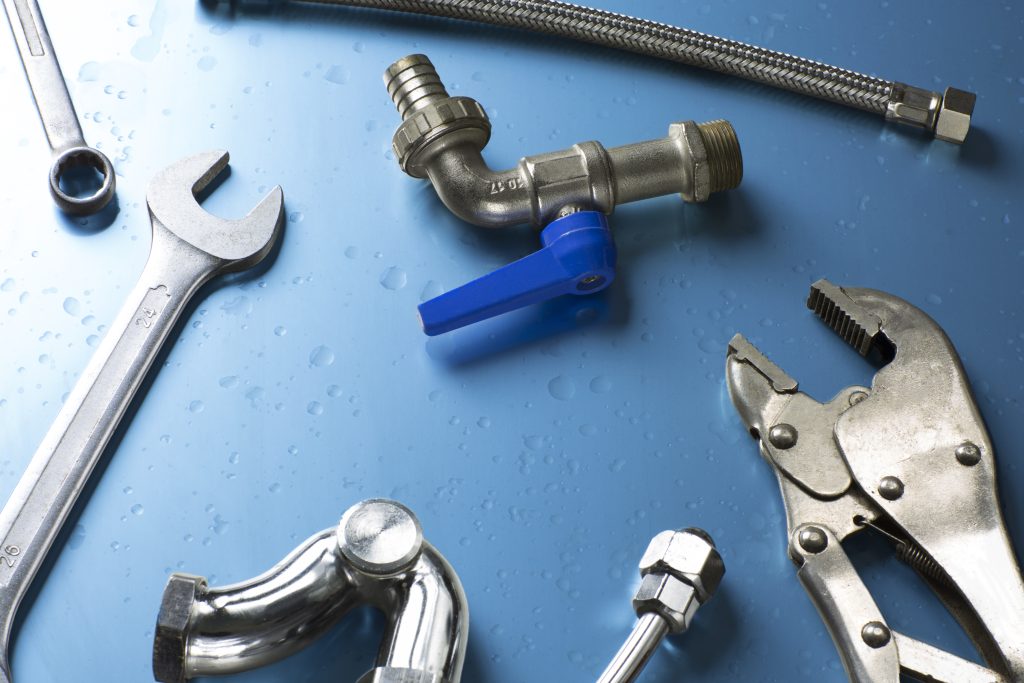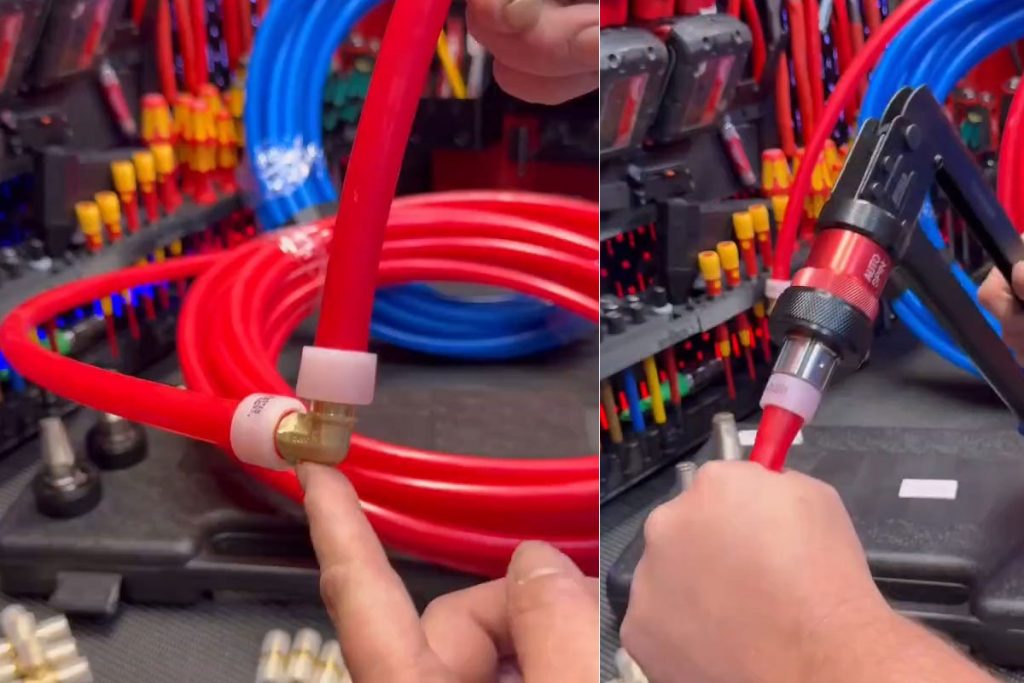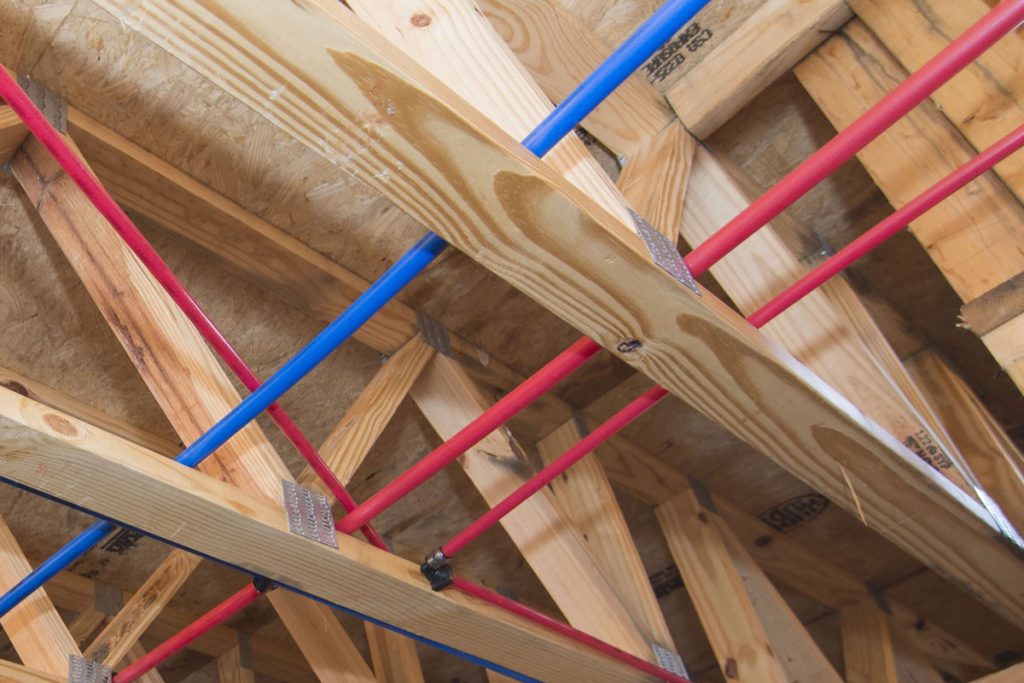Water flow control is essential for various plumbing applications, from everyday household to complex industrial processes. Controlling the flow will help ensure an efficient and safe plumbing system. Water valves play a crucial role in controlling the flow of water in piping systems. The purpose of most water valves is to completely or partially restrict the water that flows through the pipe. While some other valves are designed to change the direction of flow or lower the water pressure. They are capable of securing a smooth and reliable operation.
The various types of water valves are designed mainly on where and how the valves will be used. Understanding different types of plumbing water valves, their functions and usages will help you to have better control over the water flow. PlumbingSell offers a wide range selection of different types of water shut-off valves and other water valves. We’ll cover the basic knowledge about water valves and how they control water flow in this guide.
Table of Contents
What is the water valve
A plumbing water valve is a specific kind of mechanical fitting used to regulate, direct or control the flow of water and prevent backflow within a plumbing system for commercial, residential or industrial applications. Installing water valves in the piping system allows both short and long-term control of water flow. It operates by opening, closing, or partially blocking the passage of water through a pipe, allowing start, stop or adjust the flow as needed.
Water valves are available in various sizes, types and materials for different functions and requirements. They also come in manual and automatic types. To turn the water valve on or off using manual valves, you will need to turn a handle or lever. The internal mechanism of a water valve varies depending on its type; the commonly seen ones are rotating ball (ball valve), sliding gate (gate valve) and others. These valves are crucial in everyday applications. To help you understand better, think of the common ones in household systems, such as sink faucets and washing machine water valves, are types of plumbing water valves.
In short, water valves are widely used across household plumbing systems to large-scale industrial water distribution networks. They are used to regulate, control and direction of water passing through a pipe. There are also specific design valves to prevent backflow and regulate water pressure. Check out the EFILED water valve collection.
The Components of Water Valves
Although there are various types of water valves available for you to choose from, the basic components for them are pretty similar. The key elements for them to work together to control water flow efficiency are mainly the valve body, bonnet, seat, trim, actuator and stem.
The outer part of the valve that houses the valve’s working components is the valve body, usually made of metal (such as brass) or plastic (like PVC). The bonnet is the valve’s cover; you can think of it as another pressure protection element. Not all water valves have bonnet. For those that have one, the bonnet is used to cover and protect the internal moving parts like stem, disk and actuator.
Inside the body is where the vavle seat is located. It often consists of metal parts and a rubber-plastic seal to tighten the mechanism together for a perfect opening and closing function. Trim is the term used for all replaceable internal parts such as the disk, seat, stem, etc. The trim is responsible for the basic motions and regulating the flow of the valve.
The actuator or handle for the plumbing water valve is the external part for manual operation. You can turn the handle or actuator to make the water valve on or off and make other changes to the water flow. The stem is the component for connecting the handle to the internal closing mechanisms (for instance, rotating ball for ball valves, flat gate for gate valves, etc.).
How a Water Valve controls water flow
The water valve uses an internal mechanism to control the water flow. It can allow water to pass through entirely or partially, completely shut off the flow, change the flow direction, prevent backflow or decrease the water pressure. The way it regulates flow mainly depends on the water valve types and functions. The water valves also come in manual or automatic control. As for now, manual water valves are still the mainstream type for most plumbing projects; They are capable of providing quick and easy control over water flow without safety concerns about lack of power.
A ball valve has a rotating ball with a hole in the center to control the water flow. When the hole aligns with the pipe, it will allow the water to flow through, while when it has been turned perpendicular, the flow will be blocked. Therefore, they are mainly used as cold and hot water shut off valves.
Check valves are another type of water valve used to prevent backflow. They function automatically by using a flap or spring-loaded mechanism that allows water to flow in only one direction. They are commonly installed at places where contaminated water needs to be separated from clean water.
Except for the two types of commonly seen water valves above, there are various valves for you to choose from, such as butterfly valves, globe valves and more. Some water valves are designed to handle high-pressure systems, while others are meant for lower applications. By opening, closing, or partially restricting the water flow, water valves are helpful for controlling water distribution, preventing leaks, managing water pressure within a plumbing system and providing quick shut-offs for maintenance and emergencies. Selecting the proper valves will help ensure efficient plumbing systems and prevent system failure.
Where are the water valves being used
Water valves are used in a wide range of applications, from household plumbing to industrial water systems. In residential piping systems, plumbing water valves are commonly found in kitchens, bathrooms, laundry rooms and outdoor garden areas. They are used to control the main water flow and water flow for different fixtures such as dishwashers, showers, toilets, etc.
The commonly seen ones are the main shut-off valves next to the water heater or under the kitchen sink, washing machine, water valve in the laundry room, and more. Outdoor hose bib allows control of water supply to garden hoses. Additionally, water heaters have their own hot water shut-off valve to manage the flow of hot water to ensure safety during maintenance or emergencies.
Suppose the layout of your house’s piping system is complicated, and you are having trouble finding the valve. In that case, you can start by finding where the pipes enter your home along the walls. You can also see the information about the valve’s location if you have a property inspection report.
Conclusion
Water valves are essential components in plumbing systems. They can ensure efficient control, regulation and direction of water flow. Whether used in household applications like sinks, toilets, washing machines and other fixtures or in large-scale industrial water systems. Plumbing water valves play a crucial role in maintaining a smooth, reliable and durable piping system.
Different types of valves serve various purposes, from shutting off water completely to preventing backflow and controlling water pressure. Choosing the right valve is key to maintaining a reliable plumbing setup. PlumbingSell offers a wide range of water valves for various needs; check out our EFIELD valve collection for a durable, high-performing plumbing water system. If you have any concerns, contact us for further assistance.



